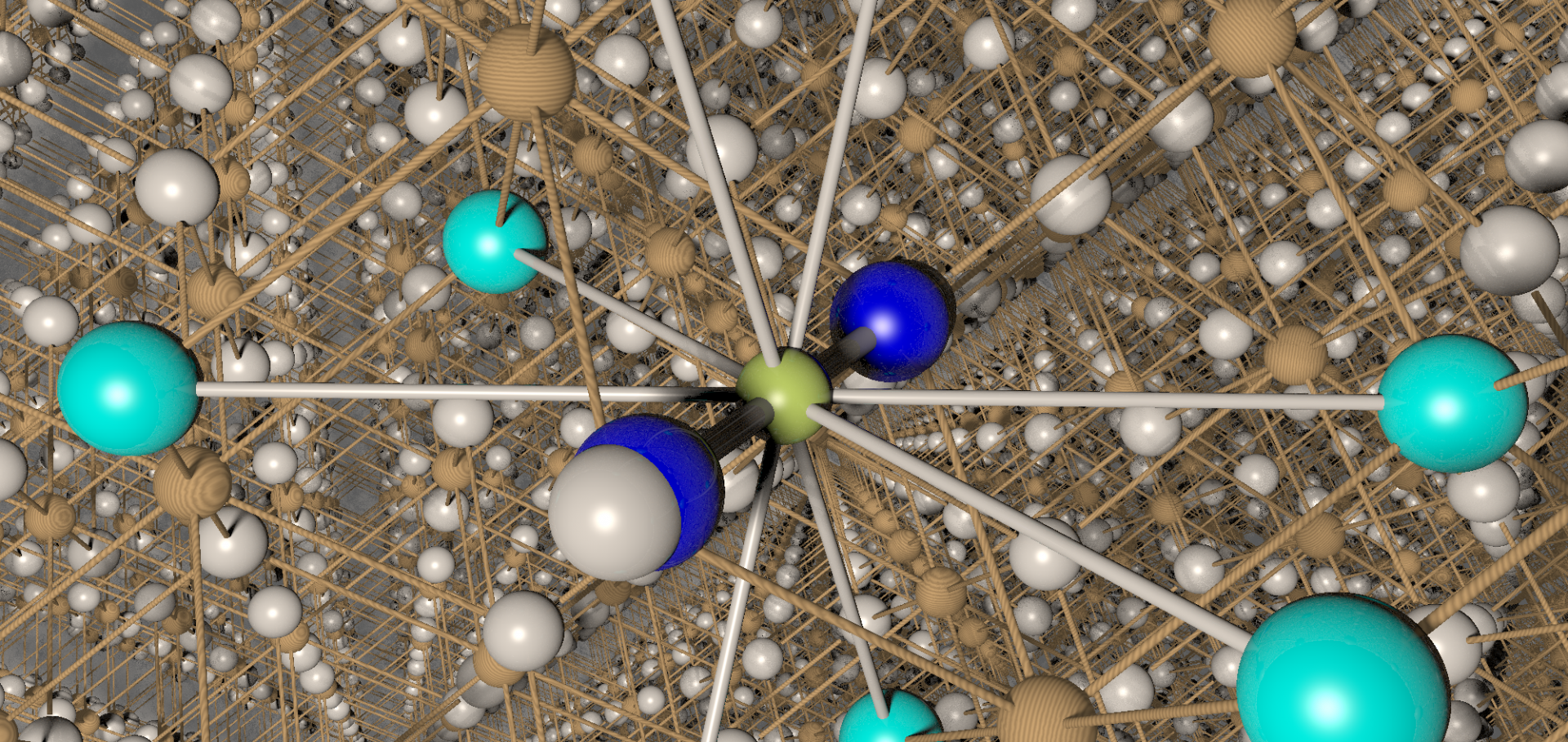ChemInform Abstract: Magnetic Properties and Magnetic Structures of Synthetic Natrochalcites, NaM2II(D3O2) (MoO4)2, M: Co or Ni.
ChemInform Wiley 40:1 (2009) no-no
Magnetic breakdown and angle-dependent magnetoresistance oscillations
Physica B: Condensed Matter (2009)
Experimental and theoretical characterization of the magnetic properties of CuF 2 (H 2 O) 2 (pyz) (pyz = pyrazine): A two-dimensional quantum magnet arising from supersuperexchange interactions through hydrogen bonded paths
Chemistry of Materials 20:24 (2008) 7408-7416
Abstract:
The structural, electronic, and magnetic properties of the new linear chain coordination polymer CuF 2(H 20) 2(pyz) (pyz = pyrazine) were determined by single crystal X-ray diffraction at various temperatures, SQUID magnetometry, pulsed-field magnetization, ESR, muon-spin relaxation (uSR), and electronic structure calculations. Each Cu 2+ ion of CuF 2(H 2O) 2(pyz) is located at a distorted CuF 2O 2N 2octahedron with axial elongation along the Cu-N bonds. These octahedra are tethered together by strong F. . . H-O hydrogen bonds to yield two-dimensional (2D) square nets in the bc-plane that are linked along the α-direction by pyrazine linkages. Measurements of the g-factor by ESR along with first principles density functional theory electronic structure calculations show that the magnetic orbital of the Cu 2+ ion lies in the CUF 2O 2 plane thus forming a 2D antiferromagnetic square lattice. A broad maximum observed in χ(T) at 10 K indicates a modest spin exchange interaction through the Cu-F. . . H-O-Cu supersuperexchange paths, and a theoretical fit of χ(T) to a 2D square model gives J 2D LK B= -5.58(1) K (in the convention where J rather than 2J is used for spin exchange). At lower temperatures, χ(T) shows a sharp peak at ̃2.6 K, which signals a transition to a long-range magnetic ordering as confirmed by coherent precession of implanted muons. Isothermal M{B) measurements made at 0.5 K on an aligned single crystal reveal magnetic saturation, M sat, at 28.8 T (Blla) while a higher field of 33.1 T is required to saturate the spins when B is applied perpendicular to the α-axis thus showing clear anisotropy in these orientations. The presence of strong hydrogen bonds in CuF 2(H 20)2(ρyz) causes the chains to adopt a tilted packing arrangement, thus leading to a novel ground-state likely characterized by spin-canting within the 2D layers and a markedly increased critical temperature relative to the well-known Cu(NO 3) 2(pyz) polymer chain compound. © 2008 American Chemical Society.Characteristic muon precession and relaxation signals in FeAs and FeAs 2 : Possible impurity phases in pnictide superconductors
Physical Review B - Condensed Matter and Materials Physics 78:21 (2008)
Abstract:
We report muon-spin relaxation measurements of highly homogeneous samples of FeAs and FeAs2, both previously found as impurity phases in some samples of recently synthesized pnictide superconductors. We observe well-defined muon precession in the FeAs sample with two precession frequencies of 38.2(3) and 22.7(9) MHz at 7.5 K, with the majority of the amplitude corresponding to the lower frequency component. In FeAs2 we confirm previous measurements showing that no long-ranged magnetic order occurs above 2 K and measure the muon-spin relaxation rate, which increases on cooling. Our results exclude the possibility that previous muon-spin relaxation measurements of pnictide superconductors have been measuring the effect of these possible impurities. © 2008 The American Physical Society.Two-dimensional magnetism in the pnictide superconductor parent material SrFeAsF probed by muon-spin relaxation
(2008)


